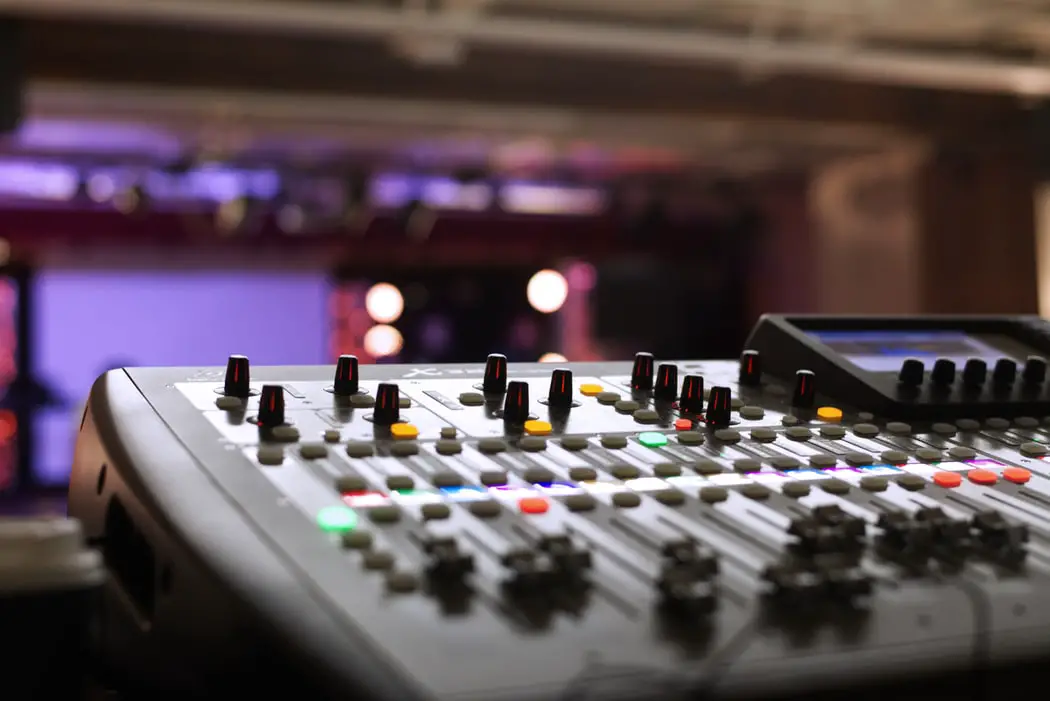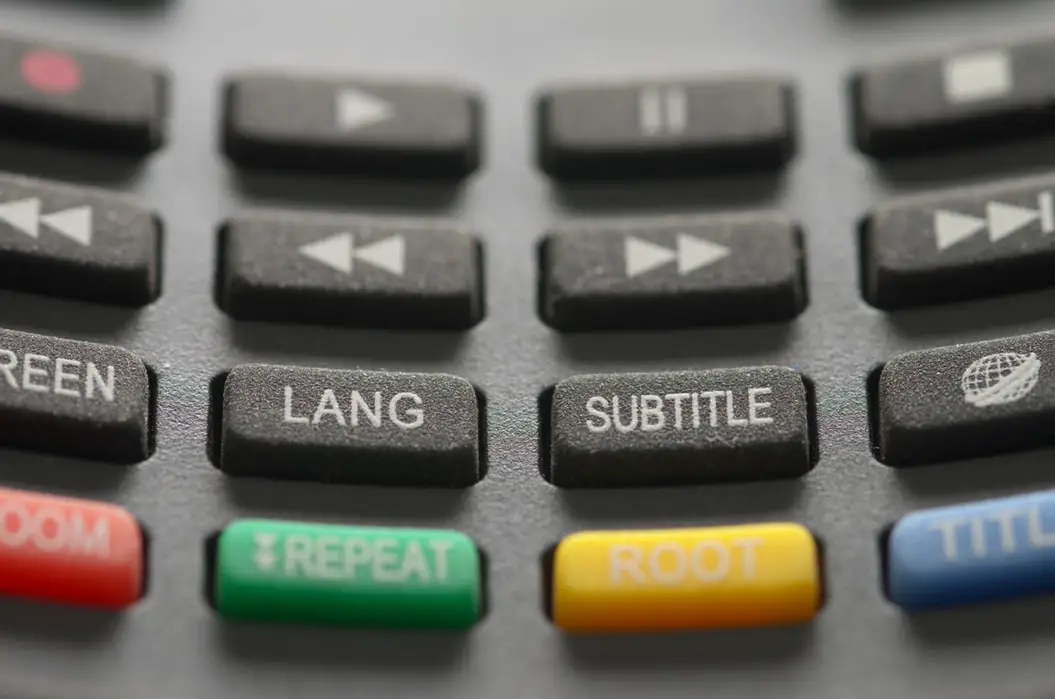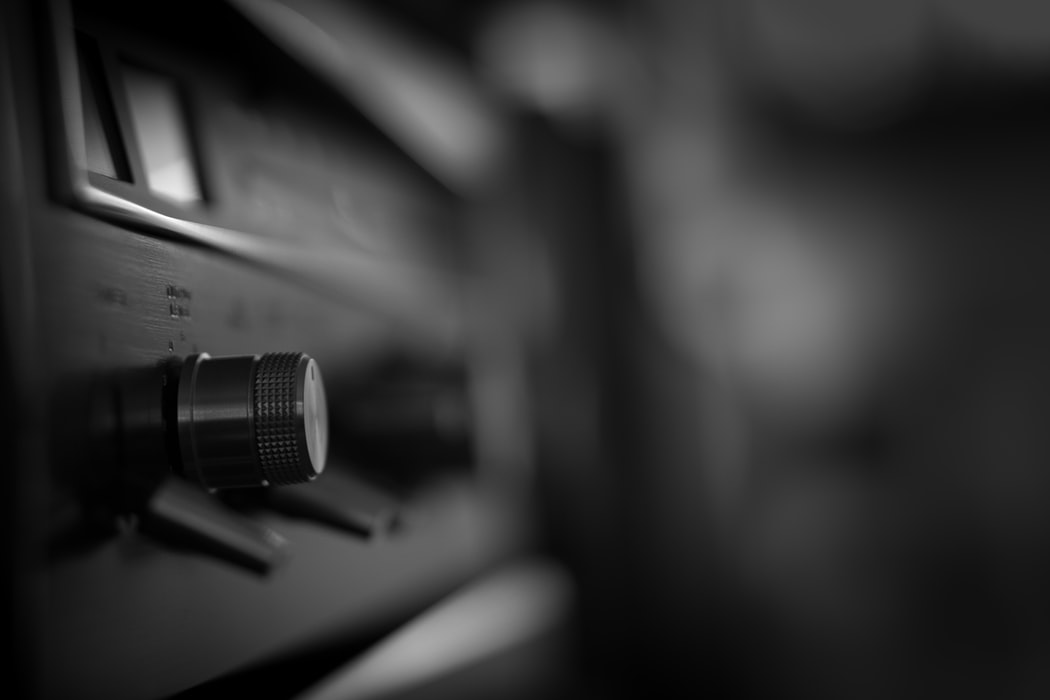![How To Deal With Sensory Overload [9 Tips For Overstimulation]](https://happyrubin.com/wp-content/uploads/2019/12/ik-ben-overprikkeld-150x150.jpg)
Sub-modalities: Explanation & The Ultimate List [Checklist]
![Sub-modalities: Explanation & The Ultimate List [Checklist]](https://happyrubin.com/wp-content/uploads/2016/08/paper-crepe-crepe-paper-colorful-65880.jpg)
In this article you will find the checklist of submodalities that you can use for different NLP exercises, such as a contrast analysis and then, for example, a ‘mapping across.’ In any case, there are numerous applications for submodalities. An overview of submodalities is discussed in the sections below.
Contents of this page:
What are submodalities?
In NLP we are more interested in the context, structure and process of the internal representations (i.e. internal images, feelings and sounds) we make than in their content.
Submodalities are not so much what you see, but how you see it.
And then submodalities come into play. This builds up our inner images and feelings . These are the building blocks – the small parts – of the modalities Visual, Auditory and Kinesthetic (VAK).
Submodalities are the finer components that create the structure of our internal representations.
Why would you work with submodalities?
You can hear everyone talking about ‘the power of visualization’, and rightly so. Visualization is powerful. Submodalities add an extra powerful refinement.
Sub-modalities are a powerful ‘NLP refinement’ in the ‘just visualization’ that you may already know and / or did.
Such a visualization is called ‘representation’ within NLP. By changing the submodalities of a representation, you change the meaning of that feeling or representation for the client! Submodalities are the way we encode our internal pictures, sounds and feelings , a sense indicate the representation.
Everything people say and do can be meaningfully reduced to the five senses.
When do you know it is time to work with submodalities?

Sub-modalities can be applied to two starting points:
- You can discover and change visualizations (representations) in detail with submodalities. For example, you can ask, “Is it an image you’re looking at, or are you in it yourself?” Are there any sounds that matter? Are they hard or soft? ‘ ‘Do you feel anything about it? Where is that feeling? ‘
- Emotions, feelings and moods, such as a feeling of nervousness. This can serve as a starting point to ask, “Where is the feeling in your body?” “How does it move?” “What kind of images do you see before you?” A breath can also have submodalities, such as location: where is your breath in your body?
You normally question the status quo in terms of submodalities
Normally you will not immediately tinker with submodalities, because you first want to know the status quo. How do the current submodalities stand for a particular representation?
“Is the image near or far?”.
Note that the ‘OR question’ is asked above so that as little control is done as possible during the querying of the submodalities. Because if you asked, “Is it in color?” while the client is a yes-says, then you already send it to color. So use the ‘or question’:
- “Is the image in color or black and white?”
- “Near or far?”
- “Is there color, yes or no?”
- (Introducing new modality) “Are there any sounds / feelings that are important, yes or no?”
Of course you will be steering when you start an intervention, but that will be discussed later in this article.
Also note that some submodalities are only ‘on or off’ (‘Is it in color or black and white?’). We call this digital submodalities. Other other submodalities have degrees, such as distance. For example, something could be 1 centimeter away, 10 centimeter away or 50 meters away. We call these analog submodalities.
You can then tinker with submodalities … but you first have to know what the effect will be

The power of submodalities is that you can tinker with them. Normally you will work with the ‘tweaking’ of Visual, Auditory and Kinesthetic submodalities (VAK).
Different submodalities have different effects in different people and on different experiences to which they are applied. So you can not generalize them.
So you can not say:
“So and those submodalities always ensure that an experience takes on a more positive meaning. And so and those submodalities always ensure that an experience acquires a more negative meaning.”
It is therefore recommended to test submodalities one by one on a person and to ask what effect it has on your feelings.
For example, you can test the submodality ‘distance’ by asking:
Is the image near or far? Get it closer / push it further away and notice what changes with your feeling.
Suppose your goal is to weaken a feeling. Then you could proceed as follows:
Just start visualizing. Is the image in color or black and white? Okay, make it black and white and notice what changes with your feelings. Does the feeling get stronger or weaker? Also put it in color and notice what changes with your feeling. Does the feeling get stronger or weaker? Ah, we just concluded that when you put it in color, the feeling gets weaker. So keep the visualization in color. Then we continue now …
So you ask , instead of accepting something. “Is the feeling getting stronger or weaker?” You can also work with numbers to find out whether a feeling is getting stronger or weaker. First, give a grade to the status quo, test a number of submodalities one by one and ask each time whether the grade goes up or down.
Secretly, this ‘testing’ of the effect of submodalities is an effective ‘intervention’ in itself. Because of this you are shaking up your internal representation reasonably well. Testing every submodality (‘Does this make a difference?) Secretly already has an effect, but without the pressure of’ I have to do this right, because this is already for real ‘. It has a bit of the same effect as when you indicate that it is now pause: “We haven’t started yet.”
Also calibration is useful in testing the effect of submodalities.
- Think of a representation of a neutral situation.
- Change a submodality. For example bigger, smaller, brighter, darker, associated, dissociated, motion, stationary …
- Notice what changes in this person’s body.
However, there are two submodalities that can be fairly generalized: distance and brightness. When something gets bigger, bigger, bigger and brighter or when something gets smaller, smaller, smaller and darker. That’s because submodalities in your internal representations are constructed exactly the same as what’s happening outside: for example, if we stand on the curb, look to the left and a truck comes at us at high speed, we have a gigantic response to that. With the fact that almost everyone reacts to this in the same way, the ‘standard’ Swish technique was created, whereby you make a desired image closer and brighter.
What can I do with submodalities?

If you can work well with submodalities, you can make powerful interventions and help people create more options. What can you do with submodalities?
- By changing submodalities you change the properties of an experience that you bring back into images – which is also called a ‘representation’. You can make good use of milton language for those exercises to make it easier. For example, “Allow the color to change.” You can also pretend you have a remote control with which you can operate all submodalities.
- The result of the above is usually that your moods can change, calls, and / 0f strengthen by the relevant experience (and the associated mood) submodalities from the list ‘VAK’ go along and they all tweak.
- One of the applications is that you can erase the submodalities of a negative experience or make it more beautiful so that the experience becomes more bearable or more beautiful. In that case, keep the content the same. You only change the properties of that content. That also ensures that you are not necessarily creating amnesia. All data is still there. At least you don’t have to expose yourself to that one unpleasant experience anymore because it happens safely at a distance and in a dim state. The memory has taken place but you can influence its effect on you in the future. Only the map of that memory has been modified. So you can choose which sense to give to what happens to you.
- Motivating, for example by linking the submodalities of a fun task to a tedious task. For example, the feeling of pleasure. So link fun to productive things you want to do. There are various exercises for this.
- Use all submodalities for many exercises! In almost all cases, they provide inspiration for practice. Just having what the client sees or hears described – along with the submodalities of those sounds and feelings – can be valuable.
- You can easily remember something by doing a ‘BOX’. For example, if you want to remember someone’s name, see the name written in front of you, hear the name spoken, and imagine how the letters of the name feel when you touch them.
- Richard Bandler also indicates that submodalities serve as a diversionary maneuver: you use them to engage the conscious brain with a task. In the meantime, you can give suggestions to the subconscious. This applies particularly clearly to the desired image in the mapping across technique.
“But … if you use submodalities to stop an unwanted feeling, then you’re not being mindful!”
Fair question. It is one and one. NLP is about generating extra choices. By tinkering with submodalities, you have extra choices about how you want to feel by finding all sorts of options for controlling emotions.
Moreover, in most NLP techniques you are also simply curious, mindful and accepting of the initial feeling you want to do something about. You first discover what the unwanted feeling feels like – which is a mindful aspect – and then you replace it with a desired feeling. You have the choice and it is one and one.
Sub-modalities even have something meditative about them. Meditation also uses submodalities work, which is one of the reasons submodalities are so powerful: observing a thought automatically shifts submodalities. Notice a thought, acknowledge the thought, observe the thought from a distance, and watch it go again. What is happening? The image of the thought fades away . The image is dissociated , no longer covers your entire vision, is no longer with surround sound, it becomes smaller, gets further away … Maybe it also becomes black and white and you also remove the sound. You sit peacefully on the side of the river and watch all those thoughts slowly pass … Those are submodalities in action.
you allow your feelings, and you do a submodality technique at times when there are obstacles, while you want or need to move forward. For example, if you are in a date, presentation or ski slope and something really needs to be done …
Examples of submodalities in ordinary conversations (‘conversational’)

We naturally use submodalities in our speech through imagery and metaphors. They make sense, but we never think of taking them literally.
Suppose someone says, “I don’t trust those people. They don’t have a voice in my life. ” It’s a logical statement. What NLP founders Richard Bandler and John Grinder did, however, was to take this literally: ” What if you did give him / her a voice, how is it different ?” Then that person suddenly does belong to your circle of trust. And that’s how submodalities emerged as a technology!
You can quickly use submodalities in conversations. You adopt the other person’s metaphor and utilize it to make a change in it.
“I don’t see it clearly yet.” “Turn the knob to make it clear.”
“I don’t know yet. It’s all so far away …” “Then literally get it a little closer.”
“The nerves are so rushing through my stomach here.” “Then how does it screech? Let it screech a little more slowly in your stomach and notice what happens to the feeling.”
“Is this the hot seat?” “This is the cool, relaxed seat that everyone can relax in.”
“I wish I wasn’t such a black and white viewer.”
“Let’s dive in.”
At the bottom of the article on metaphors you will find more about the literal utilization of metaphors and the accompanying submodalities.
Examples of submodalities – For use in NLP exercises
Visual
The submodalities in bold are often the ‘drivers’: the most powerful submodalities.
- Do you see it associated or dissociated?
- Distance: how close or how far is the image specific? Take some distance, is it less bad? Take some more distance.
- Size: how big is the image?
- Location: where is the image in space?
- Color: is it in color or in black and white?
- Brightness: Is the picture brighter or darker than usual? How bright is it? You can over-illuminate the image for less detail. Doesn’t that work yet? Then over-relieve it a bit more.
- Color intensity / saturation: are the colors vivid / bright / intense / bright / brilliant or dull?
- Is it framed / framed or is it panoramic?
- Contrast: is there high contrast or low contrast?
- Sharpness: is the image focused and therefore sharp, or blurred?
- Texture: is the texture of the image smooth or rough?
- Level of detail: are there details in the foreground and background? Do you see the details as part of the whole or do you have to change your focus to see them?
- Shape: what shape does the image have? Is it square, round, rectangular?
- Limit: is there a limit to the image? Does the border have a color? How thick is it?
- Angle: from what angle do you see it?
- Proportion: are the sizes of the objects in the image in proportion to each other? Are they bigger or smaller than in real life?
- Dimension: is the image 3D or flat?
- Single or multiple: do you see an image or multiple fragments? Do you see them together or always one after the other?
- Number: how many images are they?
- Motion: is it a movie or a snapshot, a still image?
- Tempo: how fast are the movements? Faster or slower than usual?
- Is the picture stable?
- Which direction is the image heading?
- Are there glitters / sparkles? This consists of other submodalities, namely brightness, location and duration …
- Is the image / are the objects in the image transparent, allowing you to see through, or solid?
- Do you see it in the foreground or in the background?
Ways to change visual submodalities
Changing sub-modalities is simple if you keep testing something out and then ask and consider what the effect of a particular tweak is: you change the submodalities of the representation and you keep checking what the effect is.
Test ‘tweaks’ in submodalities one by one, after which you ask whether the ‘tweak’ of a particular submodality has had an effect. A frequently used question for this is: “What is the effect?” “Did that make {mood x} stronger or weaker?” “Do you want to keep it that way or put it back?”
By applying this, you are using the TOTE philosophy instead of making assumptions yourself that certain content will have a certain effect. There are always exceptions related to content. A dark image can have a desired effect for some people and an unwanted effect for some people. Candlelight or sunset, for example, has charm in the dark for many people. You will only find out by asking.
In addition, here are examples of creative ways to change visual submodalities:
- Rotate and enlarge the image so that it completely covers your vision.
- Bigger picture, brighter, more colorful, closer to you.
- Bring it closer, more focused and brighter and sharper.
- Let that red color spread all over your heart.
- Rotate the size dial to make (pretend) that negative person a measly little man.
- Turn it into a cartoon – Pinocchio nose.
- Give people long ears: Mickey Mouse ears.
- Fast Rewind: Make them swallow their words.
- Black and white, darker, step out and reduce to a dot. Send the image to the sun to destroy. It’s so funny almost that it’s such a small point now and so far away.
or transfer energy field to me. - Make smaller, further, go even further than black and white TV: Middle Ages: painting, so silent.
- Imagine a door slamming. See it and hear it!
- Take the image of the memory and put it behind you. Slowly push it further behind you until it is a dim point in the dark.
- Allow the images to become vivid, very clear, super HD!
Auditory
Are there any sounds that play a role in your representation? If so, discover the submodalities below. If not, skip it.
- Location / direction: where does the sound come from? Do you lord it on the outside or on the inside?
- Height: are they high or low tones? Higher or lower than normal?
- Tonality: what is the tonality?
- Melody: is it monotonous or melodic?
- Volume: how loud or soft is it? In a bad situation you could make the sounds softer (sirens, howling).
- Tempo: how fast or slow is the sound?
- Rhythm: does it have a beat?
- Mono / Stereo: Can you hear the sound from one side or both sides?
- Distance: is the sound near or far?
- Duration: how long does the sound last?
- Is the sound mainly verbal or tonal?
- How clear is the sound? (Hear the sound as if you were listening it through the best speakers in the world.)
- Is the sound continuous or are there pauses or silences? How much?
- Intensity?
- Internal or external?
- Uniqueness?
- Is there an internal dialogue? What kind of dialogue is that?
Ways to change auditory submodalities
Changing sub-modalities is simple if you keep testing something out and then ask and check what the effect of a particular tweak is: you change the submodalities of the representation and you keep checking what the effect is. In addition, here are examples of creative ways to change auditory submodalities:
- For example, mean people let you hear through an Elmo or Goofy voice.
- Or repeat what others – or yourself – say several times with two fingers up your nose.
- Give some of the sayings the sexiest – maybe even German – voice you have.
- Give statements another crazy voice.
- You can add some crazy music and voice to a negative situation, such as cheerful summer music or circus music.
- Weird funny noises.
- Click it into place, making a sound as if the door is locked. Click!
Kinesthetic
Are there feelings that play a role in your representation? If so, discover and play with the submodalities below. If not, skip it.
Kinesthetic submodalities refer to tactile feelings, such as the feeling of snow on your cheek. The emotional feelings are not submodalities – emotions are the result of the submodalities filters. That is why emotions are called kinesthetic-evaluative . They are meta-feelings about something. For example, happiness or anger about snow on the cheek.
- Intensity: how strong or weak is the feeling?
- How would you describe it? Tinkling, hot, cold, relaxed, tense, etc.?
- Location: Where do you feel it in your body?
- Movement: Is there movement in the feeling? Is the movement constant or does it come in waves?
- Direction: Where does the feeling begin? Where does it move?
- Speed: does the feeling slowly get stronger or does it arrive all at once?
- Area: Where do you feel it in your body? Big or small?
- Shape: What shape is the feeling?
- Size: how big is it? From where to where does it run?
- Weight: Is it heavy or light?
- Vibration?
- Texture?
- Color?
- Is the feeling constant or does it keep going on and off?
- Temperature: is it a warm or cold feeling?
- Does it have a certain pressure?
- Is it transparent or solid if you touched it?
- What kinds of emotions are involved?
- Internal or external?
Ways to change kinesthetic submodalities
Changing sub-modalities is simple if you keep testing something out and then ask and consider the effect of a particular tweak: you change the submodalities of the representation and you always check what the effect is. In addition, here are examples of creative ways to change kinesthetic submodalities:
- I want you to feel so detached from the grip (Then create a positive new one: modeling and conditioning that by repeating)
- Include the feelings and emotions. Where in your body do you experience it?
(Pay close attention to where she unconsciously goes with her hands as she thinks, because her subconscious will automatically provide the answer.) - (After time line therapy is done) Grab the unwanted past emotion from your timeline. There’s a mini lauher in your pocket. Chhhhhhh Pggggg! ‘
- Think creatively. For example, pick the past emotion from the face. ‘Do I have it? Or is it bigger? Then remove it including sound effect.
Auditory digital
This is about your inner dialogue. It is good to talk to yourself encouragingly and helpfully in a sweet self-voice. Which child wants to listen to a loud criticizing voice? How would you encourage a friend? Why not encourage yourself in the same way?
You can read how to do something about it, and how you can tackle this with submodalities, in this article about breaking through negative thoughts.
Experiment by changing just one submodality

Order:
- Take a neutral representation (visualization), for example of your living room or office.
- Change one submodality. For example, make it transparent . So you can see through stuff, walls and people.
- Open your eyes and talk about your experience. Not about the content of the representation, but about the effect of submodality . For some it becomes less real and therefore less threatening, more open, funnier because you see people through the walls or brighter …
Experience all submodalities once in a visualization
Think of an experience (in other words, create a representation) where you felt invincible and successful. Hear the sounds in the room, of approval, the applause … See the smile on people’s faces. Their warmth and admiration … Experience your feelings, the warm flow of self-confidence in you …
Now ask yourself what a number of submodalities are: What is the volume of the voices? How clearly do you see it? How colorful? How does that flow of self-confidence move in your body?
Exercise – Convincer for the power of submodalities

If a client wonders whether doing something with NLP really has any effect, the use of ‘convincers’ is one of the solutions. Before you start with a serious exercise, you can therefore perform a ‘convincer’. The convincer below proves to your client how effective a representation (an experience created in thought) can be.
- Think of a lemon. Think of the color, the shape, the smell, the taste. Picture the lemon in front of you. Feel the lemon in your hand, how does the peel feel? Imagine cutting the lemon in half. You have now cut it, take one half, bring it to your mouth and you drip it into your mouth. You now squeeze the lemon further into your mouth, you taste the taste and swallow it.
Our nervous system does not recognize a difference between real events and created events. This allows us to dive into and adjust our memories and create new memories. This way all kinds of problems and limitations can be solved.
How to remove these kinds of test suggestions: “This suggestion for testing has been removed. You are as before, everything has been undone. ”
Exercise – Using sub-modalities for fears
- What are you afraid of (e.g. a spider)?
- Go back to a memory where you had that fear. In other words, make it a representation.
- How big was the spider? How tall were you?
- Change the submodalities. These are elements of the experience that you can perceive with your senses. Turn these parameters:
- the size: let the spider in your memory shrink to just a point. Find out what the effect is.
- the location: send the dot very far away, for example towards the sun. Find out what the effect is.
- the clarity: make your memory so unclear that you can no longer see it. Find out what the effect is.
- the volume knob, so mute the reminder. Find out what the effect is.
etc.
Exercise – Experiment
- Person B plays with submodalities and gives instructions to A. Person B keeps asking what the effect is. And which submodalities change spontaneously?
- While B does this, he himself experiences everything first. As a coach, always go first!
- C calibrates both A and B.
- Ask yourself: In what situation could your tests be useful?
Exercise – Using a TV to reinforce a positive state of mind
- Is your client talking about a positive memory? Ask him or her to see the memory on a black and white TV.
- Make a square with your fingers to create the black and white TV from afar.
- Bring it closer and closer and especially strengthen the visual submodalities. For example, make it colorful, vibrant, with loud sounds, etc. Discover together what can be experienced in that experience.
Exercise – Sub-modalities of confusion and understanding
- Name the characteristics of something where you experience confusion.
- Name the qualities of understanding.
- Do the contrast analysis, as shown in the center of this article.
You can also compare the submodalities of doubt and conviction and test them one by one. You could flash out one belief and flash back the new one, or let the old go all out and bring back the new one, or let the old blend all the way into a white screen and bring back the new one.
Treat boring tasks with submodalities
Suppose you have to do your accounting, and you dread it. Then close your eyes and think of an exciting experience where you were curious. Open your eyes and look at the boring topic, accounting in this case. Repeat this five times. Then test if it worked: do a pattern break and then look at the math and notice your reaction.
The feeling-reversal technique
Do you have a bad feeling? Then try this out.
- Feel where the feeling is in your body and how it moves.
- Draw the feeling outside of your body in your mind’s eye, for example on a white sheet of paper that you imagine. Consider drawing the feeling as if you are playing with finger paint.
- Also draw the movement of the feeling: is it going from high to low in your body or from low to high? Or from left to right, right to left, rotating, contracting or expanding?
- Color it too.
- Now imagine the opposite movement – and a different color with glitter if you like. (You may also notice other submodalities, such as auditory submodalities).
- Pick up the feeling and put it back into your body. Possibly with a whoosh sound. Feel it moving through your body in the opposite way – faster and faster.
- As a bonus, we can substitute a desired feeling for it. Now think about a moment when you had a good feeling, such as peace, relaxation, pleasure and security. Where does that good feeling in your body start? Possibly key to some submodalities to strengthen the feeling.
More formal techniques that use submodalities
- Swish
- Fast phobia technique
- Mapping across
- And to a lesser extent many other NLP techniques.
Blowout: if a submodality crosses a threshold, the effect can change
It is not always the case that a submodality, such as ‘size’, increases the effect in the same way with every further step. Take the example of a spider. If you enlarge the spider, it is very scary at first! It gets scarier as the spider takes on the size of a football, a chair, a room, a city, a country and the earth.
But once a certain threshold is reached, such as when the spider becomes the size of the solar system, and then the galaxy, then the universe, then suddenly it becomes less and less scary.
With this effect you can do the ‘compulsion blowout technique’. This uses the mapping across technique.
- Question the submodalities of something the client is doing compulsively.
- Question the submodalities of something neutral.
- Do a contrast analysis to discover the most powerful submodalities. Which submodalities increase the feeling of doing something compulsive / obsessive?
- Make these submodalities associated with compulsive behavior stronger and stronger and stronger until the feeling of the obsession has ‘snapped’.
- Finish with a Swish technique.
- If there is an uncomfortable feeling, do the blowout with the neutral activity to undo it.
Deepening further (reading tips!)
In what ways do you use submodalities? Let me know in the comments. Sub-modalities are discussed extensively in the NLP Practitioner Training. Tip: view even more extensive lists and articles on this website. In any case, visit the reading list with NLP book tips so that you can continue to educate yourself.
Freestyle with submodalities
If you are already handy at metaphors , utilization, and rapport , you know that you can do really cool things by borrowing other people’s metaphors. For example, if someone says: “I keep bumping into a wall,” let the submodalities go loose. ‘What happens if you move away from the wall? And if you give it your favorite color? And if you let it shrink to a threshold? Step over it and back. ‘
Be creative, experiment and use the TOTE philosophy . Then it is impossible to make mistakes. Have fun!

![5 Best Self Care Tips For College Students [#1 Advice]](https://happyrubin.com/wp-content/uploads/2021/09/the-best-self-care-tips-for-college-students-440x264.jpg)
![How To Stick To New Year’s Resolutions: 9 Tips [Smart & Sure Ways]](https://happyrubin.com/wp-content/uploads/2019/12/tips-voor-goede-voornemens-440x264.jpg)
![How To Stop Being So Hard On Yourself [9 Great Tips]](https://happyrubin.com/wp-content/uploads/2019/12/we-moeten-zoveel-van-onszelf-en-anderen-150x150.jpg)

![19 Best Ice Breaker & Get-To-Know-Eachother Games [Fun & Simple]](https://happyrubin.com/wp-content/uploads/2018/02/leukste-ijsbrekers.jpeg)
![Becoming More Social: 41 Tips [Improving Social Skills] [List]](https://happyrubin.com/wp-content/uploads/2018/06/sociale-vaardigheden1.jpeg)
![How to start a conversation with anyone: 15 tips [Making contact]](https://happyrubin.com/wp-content/uploads/2017/08/gesprekstechnieken1.jpeg)
![372 Friend Tag Q&A Questions [Best Friend Quiz]](https://happyrubin.com/wp-content/uploads/2019/05/best-friend-tag-vragen-voorbeelden.jpg)



![Clingy & controlling behavior of partner/date [Extreme examples]](https://happyrubin.com/wp-content/uploads/2020/06/claimerig-gedrag-van-partner-eigenschappen-en-voorbeelden-150x150.jpg)

![How to recognize if a man is in love [Signals & his body language]](https://happyrubin.com/wp-content/uploads/2020/05/verliefd-gedrag-van-mannen-herkennen-150x150.jpg)


![Free will and religion / theology [Verses & Quotes on free will]](https://happyrubin.com/wp-content/uploads/2020/10/religion-on-free-will-quotes-1050x640-1-150x150.jpg)

![Dealing With Setbacks & Hardship [Lessons & Examples]](https://happyrubin.com/wp-content/uploads/2018/11/omgaan-met-tegenslag-tips-hoe-dan.jpeg)
![NLP Agreement Frame: Use these exact sentences [Examples]](https://happyrubin.com/wp-content/uploads/2020/10/agreement-frame-nlp-1125x640-1-440x264.jpeg)
![122 Best Comebacks In Any Situation [Best Examples]](https://happyrubin.com/wp-content/uploads/2020/06/beste-comebacks-technieken-tips-440x264.jpg)
![Using Hypnosis to Stop Smoking [HowTo]](https://happyrubin.com/wp-content/uploads/2020/05/stoppen-met-roken-door-hypnose-150x150.jpg)
![Presuppositions language pattern: meaning & examples [NLP]](https://happyrubin.com/wp-content/uploads/2020/04/wat-zijn-vooronderstellingen-150x150.jpg)
![Peripheral Vision: Meaning & Exercise [Essential Skill]](https://happyrubin.com/wp-content/uploads/2020/04/perifeer-zicht-trainen-tips-150x150.jpg)

![How To Start A Coaching Business [21 Smart Tips]](https://happyrubin.com/wp-content/uploads/2018/11/coachingpraktijk-starten-tips.jpeg)
![How to make dreams come true? [33 tips to realize dreams 100%]](https://happyrubin.com/wp-content/uploads/2018/05/dromen-mijlpalen.jpeg)
![How To Become Rich? 27 Millionaire Tips [Guaranteed To Work]](https://happyrubin.com/wp-content/uploads/2018/01/hoe-kan-ik-rijk-worden.jpeg)
![77 Best Online Marketing Tools [Recommendations] [Also Free]](https://happyrubin.com/wp-content/uploads/2018/08/beste-onlne-marketing-tools-tips.jpeg)
![Complete List Of Virtues & Qualities [Including Explanation]](https://happyrubin.com/wp-content/uploads/2018/12/kernkwaliteiten-uitleg.jpeg)
![Being Attentive: How Do You Do That? [Meaning & 9 Tips]](https://happyrubin.com/wp-content/uploads/2019/05/attent-zijn.jpg)
![Being Conscientious: Meaning Of This Virtue [Explained]](https://happyrubin.com/wp-content/uploads/2018/07/Consciëntieus-persoon.jpg)


![Best Books About Burn-Out [Top 10] [Update 2025]](https://happyrubin.com/wp-content/uploads/2020/06/beste-boeken-over-burnout-lijst-440x264.jpg)
![Best Self-love Books [Top 10] [Update 2025]](https://happyrubin.com/wp-content/uploads/2020/04/beste-boeken-over-zelfliefde-aanraders-440x264.jpg)
![Life changing books: 10 books that change your life [2025 Update]](https://happyrubin.com/wp-content/uploads/2020/03/levensveranderende-boeken-tips-150x150.jpg)
![Top 10 Best Books: Recommendations Per Genre [2025 Update]](https://happyrubin.com/wp-content/uploads/2019/12/best-books-per-genre-150x150.png)
![Best Books On procrastination: Must Reads [List] [2025 Update]](https://happyrubin.com/wp-content/uploads/2019/11/beste-boeken-over-uitstelgedrag-tips-150x150.jpg)
![Joe Dispenza: Events To Attend [2025 & 2026] [All Info]](https://happyrubin.com/wp-content/uploads/2020/02/joe-dispenxa-events-440x264.png)
![Best Online Study Options [Online Education Top List]](https://happyrubin.com/wp-content/uploads/2019/03/best-home-study-options-440x264.png)
![Teachable Review & Experiences 2025 [Bad Online Training Tool?]](https://happyrubin.com/wp-content/uploads/2020/02/Teachable-review-ervaringen-150x150.png)
![Audible Review, Experiences & Special Discount [Scam?]](https://happyrubin.com/wp-content/uploads/2020/01/audible-review-ervaringen-150x150.png)
![Guest Posts Wanted [Free & Always Directly Accepted]](https://happyrubin.com/wp-content/uploads/2019/05/gastbloggen-regels.jpg)

Very interesting information. Thank you for the amount of work you put into compiling it. Wow.
Interesting ! I tried the lemon experiment one can really feel the taste of lemon .
Wonder this may be really useful in erasing or raising new memories. Thanks for the interesting reading,